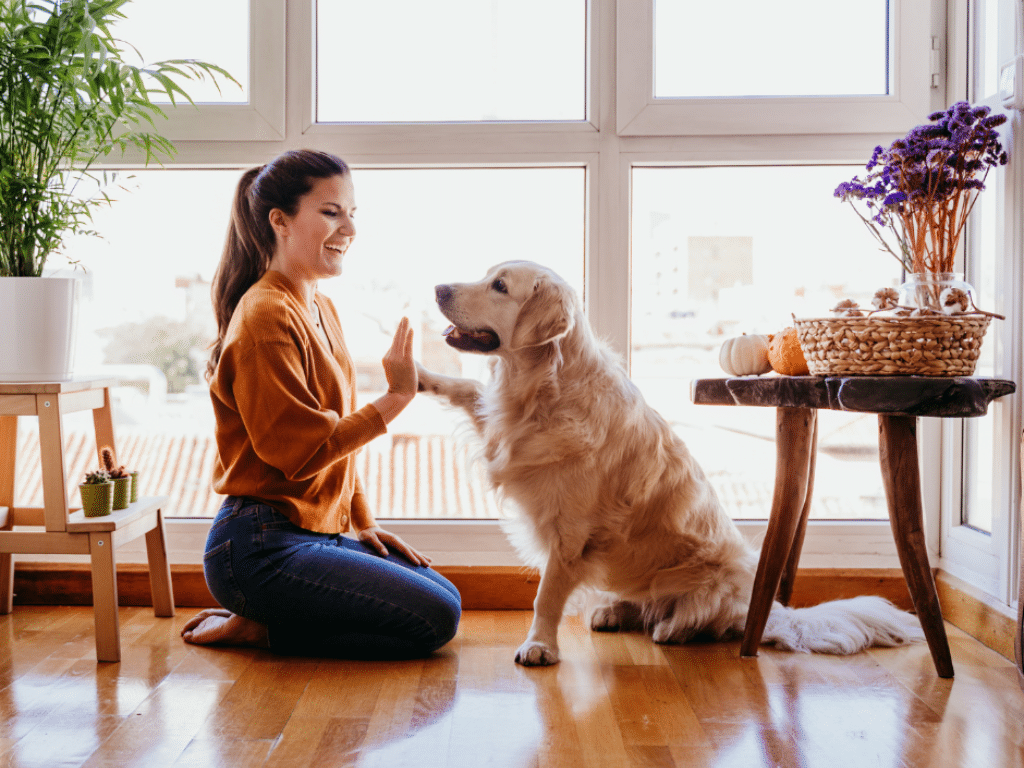Dog training is an essential part of responsible pet ownership. Whether you’re a new dog owner in Hamilton or an experienced handler looking to refine your techniques, understanding the core principles of dog training can make all the difference. In this comprehensive guide, we’ll explore the three foundational P’s of dog training: Patience, Persistence, and Positivity. These principles are critical for anyone looking to train their dog effectively and humanely, ensuring a happy and well-behaved canine companion.
Why Dog Training Matters
Before diving into the 3 P’s, it’s important to understand why dog training is so crucial. Dog training is more than just teaching your dog to sit or stay; it’s about establishing a clear line of communication between you and your dog. Proper training ensures that your dog understands what’s expected of them, which reduces stress for both the dog and the owner.

Moreover, effective dog training helps to prevent behavioural issues such as aggression, anxiety, and destructive behaviour. In a city like Hamilton, where dogs frequently interact with other people and pets, having a well-trained dog is not just a convenience—it’s a necessity. Now, let’s explore the 3 P’s in detail.
Patience: The Cornerstone of Dog Training

Understanding Your Dog’s Learning Pace
Every dog is unique, with its own learning pace and style. Some dogs may pick up new commands quickly, while others may take longer to grasp the same concepts. Patience is key to helping your dog understand what you’re asking of them without causing confusion or stress.
Avoiding Frustration
Training a dog can be frustrating, especially when progress seems slow. However, getting frustrated can lead to negative outcomes. Dogs are incredibly perceptive and can pick up on your emotions. If you’re frustrated, your dog is likely to become anxious or stressed, which can hinder the training process. Instead, maintain a calm and patient demeanour, giving your dog the time they need to learn.
Examples of Patience in Action
Imagine trying to teach your dog to sit. You might say the command several times without seeing the desired response. Instead of repeating the command in a louder or more insistent tone, pause and give your dog a moment to process. Reward even the smallest progress, such as your dog lowering its back end slightly, to encourage further effort.
Persistence: The Key to Consistency

Why Consistency is Crucial
Dogs thrive on routine and consistency. Persistence in training means regularly practicing commands and reinforcing good behaviour. Without persistence, your dog may become confused about what’s expected, leading to inconsistent behaviour.
Building a Routine
Developing a consistent training routine is vital. Set aside specific times each day for training sessions, and stick to them. This routine helps your dog understand that training is an important part of their day and encourages them to be more receptive during sessions.
The Power of Repetition
Repetition is a powerful tool in dog training. By consistently reinforcing commands and rewarding correct responses, you help solidify the desired behaviour in your dog’s mind. For example, if you’re training your dog to come when called, practice in different environments—indoors, in your backyard, and at a local park. This variation helps your dog generalize the command, making them more likely to respond in any situation.
Working Through Challenges
Persistence also means not giving up when training becomes challenging. Some dogs may struggle with certain commands or behaviours, but with persistence, they can overcome these obstacles. If you find yourself struggling, consider reaching out to K9 Principles for professional dog training in Hamilton. Their expert trainers can offer guidance and support, ensuring you and your dog stay on the right track.
Positivity: Building a Strong Bond with Your Dog
The Role of Positive Reinforcement
Positive reinforcement is one of the most effective tools in dog training. This method involves rewarding your dog for performing a desired behaviour, making it more likely that they will repeat the behaviour in the future. Rewards can include treats, praise, or affection—whatever motivates your dog.
Creating a Positive Training Environment
A positive training environment is one where your dog feels safe, comfortable, and eager to learn. Use an upbeat tone of voice, and be generous with rewards and praise. This approach not only makes training more enjoyable for your dog but also strengthens the bond between you.
Avoiding Negative Reinforcement
While it may be tempting to scold your dog for undesirable behaviour, negative reinforcement can often do more harm than good. It can cause fear and anxiety, which are counterproductive to training. Instead, focus on reinforcing the behaviours you want to see and redirecting your dog’s attention when they engage in unwanted behaviour.
Practical Applications of Positivity
Let’s say you’re teaching your dog to stay. Start with short intervals, such as having your dog stay for just a few seconds before rewarding them. Gradually increase the duration as your dog becomes more comfortable with the command. Each time they succeed, offer a reward and plenty of praise. This positive reinforcement encourages your dog to continue trying and builds their confidence.
Combining the 3 P’s: A Holistic Approach to Dog Training in Hamilton
To achieve the best results in dog training, it’s essential to combine Patience, Persistence, and Positivity. These principles work together to create a holistic approach that addresses your dog’s emotional and behavioural needs.
- Patience allows your dog to learn at their own pace without pressure.
- Persistence ensures that training is consistent and effective.
- Positivity fosters a supportive environment where your dog is motivated to learn.
When applied together, the 3 P’s can transform your dog training experience, making it more enjoyable and successful for both you and your dog.
Why Choose K9 Principles for Dog Training in Hamilton?
If you’re looking for expert guidance in applying the 3 P’s to your dog training in Hamilton, look no further than K9 Principles. As a trusted name in the Hamilton area and the dog trainers for the Hamilton/Burlington SPCA for over a decade, K9 Principles offers a range of training services tailored to meet the needs of every dog and owner. Our professional dog trainers are skilled in using positive reinforcement techniques and are dedicated to helping you build a strong, trusting relationship with your dog.
Whether you need help with basic obedience, advanced training, or addressing specific behavioural issues, K9 Principles has the expertise to guide you through the process. With our support, you’ll be well on your way to having a well-behaved, happy dog who is a joy to live with.
Conclusion
Dog training is an ongoing journey that requires dedication and understanding. By embracing the 3 P’s—Patience, Persistence, and Positivity—you can create a strong foundation for effective training. Remember, whether you’re a new dog owner or someone looking to refine their training skills, professional help is always available. For dog training in Hamilton, K9 Principles is your go-to resource, offering the expertise and support needed to achieve lasting results.
- Name: K9 Principles
- Address: Haldimand County, Greater Hamilton Area, Burlington and Most of Norfolk County
- Phone: 289 880-3382
- Email: k9principlesinc@gmail.com
- Website: www.k9principles.ca
FAQs
-
The 3 P’s of dog training are Patience, Persistence, and Positivity. These principles are essential for successful training.






